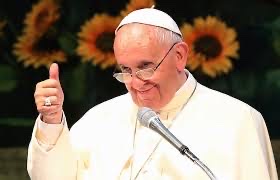The Mass - Meal and Sacrifice - The Eucharist as a Sacrifice - PART 4
PART 4 - UNDERSTANDING GROWS - THE EUCHARIST AS A SACRIFICE
Very early, those who believed in Jesus as the Messiah came to understand his crucifixion as a sacrificial death, an offering of himself to God, and because the Lord’s Supper commemorated his death as well as his triumph over death they began to view it as a sacrificial meal. The close relationship between the Last Supper and the feast of Passover suggested similarities between the slaying of Jesus and the sacrifice of the paschal lamb.
In the New Testament, Jesus’ own words, and the way in which he instituted the Eucharist also show its sacrificial nature. Christ made His Body and His Blood present under separate forms and thus in the form of a sacrifice. The separate forms symbolically represent the real separation of the Body and Blood of Christ which was made in the Sacrifice of the Cross. Christ designates His Body a sacrificial Body and His Blood, sacrificial blood when He declares, “This is my Body which shall be given up for you”, and “This is my Blood, which shall be shed for you.”The expressions “to give up the body” and “to shed blood” are biblical sacrificial terms, which express the oblation of a true and proper sacrifice.
An important early Church writing was the Didache (Greek for “teaching”), which purports to be the “teaching of the twelve Apostles” and was written in the first or second century. The Didache not only teaches that the Mass, “the breaking of the bread”, had become the focus of Lord’s Day worship in the early Church, but it also uses the word “sacrifice” a total of four times to describe the nature of the sacramental celebration. For example, the Didache provides:
“On the Lord’s Day…gather together, break bread and give thanks, after confessing your transgressions so that your sacrifice may be pure…For this is that which was proclaimed by the Lord: “In every place and time let there be offered to me a clean sacrifice…”
So, form at least the end of the 1st century, it was also held that the Eucharist is in some sense a sacrifice, though here again the definition was gradual. The suggestion of sacrifice is contained in much of the New Testament language. In Judaism bread and wine we’re sacrificial elements, and the words at the institution, ‘covenant’, ‘memorial’, ‘poured out’, all have sacrificial associations. This aspect of Eucharistic doctrine, rather than any precise understanding of the Eucharistic Presence, was the center of discussion in the Eastern Church, and a council at Constantinople in 1157 upheld the teaching that the Liturgy makes present the Sacrifice of Christ that is ‘eternally celebrated’ upon the ‘altar on high’. It was long, however, before any attempt was made, either in the East or the West, to define more closely the nature of the sacrifice, though from the 14th century onwards a vast literature on the subject developed.
The Church Fathers defended the sacrificial character in the Eucharist very strongly. St. ignatius of Antioch (A.D. 107) indicates the sacrificial character of the Eucharist by speaking in the same context of the Eucharist and of the altar; but the altar is the place of sacrifice..
St. iranarus of Lyons (A.D. 202) teaches that the flesh and blood of Christ, “are the new sacrifices of the New Covenant which have been handed down to the Church by the Apostles, in which She, throughout the whole world, offer to God”
St. Cyril of Jerusalem (A.D. 386), the the fifth Mystagogical Catechesis gives a description of the celebration of the Eucharistic ceremony customary at his time. He designates the consummation of the Eucharist asa spiritual sacrifice , as an unbloody Divine service, as a sacrifice of reconciliation. The sacrificial gift is, “ The Christ who was slain for our sins”
St. John Chrysostom (A.D. 407) exhorts, “Have therefore reverence, have reverence before this table, of which we all participate, before Christ, who was slain for us, before the sacrifice, which lies on the table.”
St. Cyprian of Carthage wrote these strong words:
“For if Jesus Christ, our Lord and God, is himself the chief priest of God the Father, and has first offered Himself a sacrifice to the Father, and has commanded that to be done in commemoration of himself, certainly that priest truly discharges the office of Christ, who imitates what Christ did; and he then offers a true and full sacrifice in the Church to God the Father, when he proceeds to offer it according to what he sees Christ himself to have offered.” [Letters 62:14 (A.D. 253)]
Among the Reformation theologians there arose a strong tendency to either deny the sacrifice or to explain it in an unreal sense. The Council of Trent, on the other hand, dealt fully with the doctrine of the sacrifice of the Mass. It affirmed that the Sacrifice of the Mass was propitiatory, that is availed for the living ad the dead, that it did not detract from the sufficiency of the Sacrifice at Calvary. It embodied its teaching of the sacrifice in nine canons (session 22; Sept 1562)
So the Eucharist was viewed as a sacrifice, but in what way?
END OF PART 4


Comments
Post a Comment